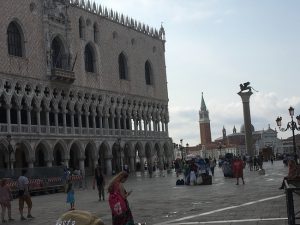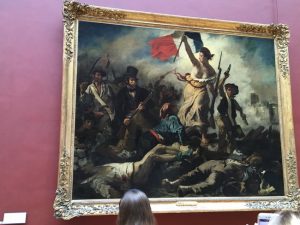Tag Archive
activity architecture art artist building Canada children city CostSaver downtown drive i-95 entertainment Europe event exhibit family festival Florida food fun historic History landmark local Museum music Nature New Zealand Ontario roadtrip sculpture Seattle show sights sightseeing tour tourist Trafalgar travel travelblogger view Washington Washington State water world
Canada: Toronto, Ontario – Nathan Phillips Square, Toronto
The seat of government is also a fun place for tourists to hang out. Look for people inside the “O”. Look around the square for sculptures: Three-Way Piece No. 2 (The Archer) by Henry Moore, Oscar Nemon’s statue of Sir Winston Churchill and even a Roman column. If you’re looking to park your car, underneath is one of the world’s largest underground parking garages.
Italy, Venice: Doge’s Palace, Venice
.
The Doge’s Palace, Palazzo Ducale, was the residence of the Doge of Venice, the supreme authority of the former Venetian Republic. The Venetian Gothic construction started around 1340 and was modified many times over the centuries due to fires and governmental needs.
France, Paris: Liberty Leading the People in the Louvre
.
Though foreigners flock to see the Mona Lisa, to the French, the most important painting in the Louvre – the unofficial national painting of France is this one, Liberty Leading the People by Delacroix. The bare-breasted female figure, who is called Marianne became a symbol of Liberty for the French Republic. Though Delacroix painted the July Revolution of 1830, the broken bodies beneath the flag depict the 40 years of civil war, political and social upheavals necessary to conquer the monarchy in order to win a representative government. The huge 8′ by 10′ scale adds to the dramatic patriotism.
US: Clinton, MD – Surratt House Museum for Christmas Past and Present
As you enter the side door of the Surratt House Museum you are walking in the path of John Wilkes Booth the night he killed President Lincoln, since he came here to retrieve a rifle, field glasses and supplies for his run from the law.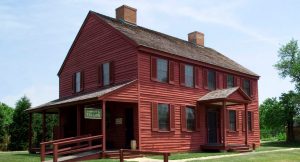
Built in 1852, this was a tavern, an inn, a post office and a polling place. It was a safe house for the Confederate underground. The massive search for Booth led them here to Mary Surratt’s house, and as a result she was tried in a military court and convicted of conspiracy to assassinate the President. On July 7, 1865 Mary Surratt was the first woman to be executed by the federal government.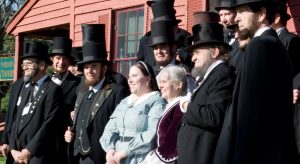
In your visit to this famous house, a docent in 1860’s period clothing walks you through the typical middle class home. History buffs can make reservations for the 12-hour “Escape Route” bus tour. Many of the same roads and houses used by Booth are still in existence and are visited on this excursion which is narrated by nationally-recognized authorities on the Lincoln assassination and John Wilkes Booth’s flight. Tour Dates for 2018: Apr 14, 21, 28 and Sept 8, 15, 22.
If you’re in the Clinton area Sat, Dec 2 – Sun, Dec 10, stop by the Surratt House Museum for their special Christmas program- An Old Fashioned Holiday: Bringing Christmas Past to Christmas Present, celebrating the Christmas of yesteryear amid period decorations, special exhibits and seasonal histories. On the weekend of December 9 and 10, return to enjoy special activities for all ages, cookies, cider, and holiday discounts in the museum’s gift shop.
Location: Surratt House Museum, 9118 Brandywine Road, Clinton, MD 20735
Hours: Wed – Fri 11am – 3pm, Sat -Sun 12 – 4pm
The Surratt House Museum is closed from Dec 12th to Jan 17th.
Tel: 301-868-1121
surrattmuseum.org
For Regional Accommodations, Restaurants & Attractions: visitprincegeorgescounty.com
US: Clinton, MD – Surratt House Hid Lincoln Conspiracy
If you are interested in Civil War History and conspiracy theories then the Surratt House Museum is a must for you.
Historic Surratt House has national significance due to its role in the dramatic events surrounding the Lincoln assassination conspiracy and the involvement of Mary Surratt.
As you enter the side door of this house, you are walking in the path of John Wilkes Booth the night he killed President Lincoln, since he came here to retrieve a rifle, field glasses and supplies for his run from the law. Mrs. Surratt became the first woman put to death by the United States government for her complicity.
The house was built in 1852 as a middle-class farm home for the family of John and Mary Surratt. It was more than a family home – the Surratt House also served as a tavern, public dining room and hotel for traveling gentlemen. Outside, the house was the focal point of a 300-acre plantation. A livery stable and nearby blacksmith shop serviced travelers, and in 1854 a post office was added to the tavern, serving the new area of “Surrattsville”. With the advent of the Civil War, the tavern became a clandestine Confederate safe house.
At the Surratt House Museum visitors take a guided tour from an
experienced docent in period clothing. Guests will not only learn of the
dramatic events surrounding the Lincoln assassination, but will learn about
daily life during the mid-19th century.
Location: 9118 Brandywine Road, Clinton, 20735
Hours: Wed thru Fri, 11am-3pm and Sat & Sun, 12 noon- 4pm . The last tour beings one half-hour before closing.
Tel: 301- 868-1121
surrattmuseum.org
For Regional Accommodations, Restaurants & Attractions: www.visitprincegeorges.com
Cosmos Tour: Prague Vienna Budapest – Beloved Sisi, Empress Elisabeth
Just as we have our beloved famous Disney princesses, the Austro-Hungarian Empire had theirs – but she was for real. They call her by her nickname Sisi, and she was their Empress for 44 years.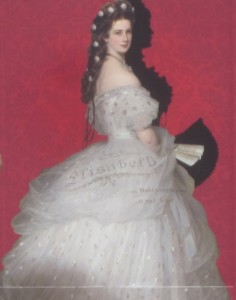
Their have been numerous movies, plays, operas, ballets, books and music about her in the German speaking world. It is probably the trilogy of romantic films about her life which starred a young Romy Schneider which made her a household name. She is so popular that the 3 movies are shown every Christmas on Austrian, German, Dutch, and French television.
Though her husband Emperor Franz Josef adored her, she felt stifled by Habsburg court life and traveled extensively whenever and wherever she could. She loved learning and spoke English, French, modern Greek and Hungarian. Her domineering mother-in-law made her life miserable and even took away her children to raise. Her first daughter died as a toddler and her beloved son Crown Prince Rudolph, heir to the throne, committed suicide along with his lover, and she never fully recovered from that loss.
Empress Elisabeth was vain and did not sit for any portraits after she was 32 and would not allow any more photographs, so that her public image would always remain of her youthful self. She was tall, and compulsively maintained the same low weight all through her life thru exercise (horsemanship, fencing, hiking) and fasting.
Her interest in politics had developed as she matured. She felt an intense emotional alliance with Hungary, and worked toward it gaining an equal footing with Austria. Elisabeth was an ideal mediator between the Magyars and the Emperor. She was a personal advocate for Hungarian Count Gyula Andrássy (he was a lifelong friend, and possibly her lover).
Finally, the Austro-Hungarian Compromise of 1867 created the double monarchy of Austro–Hungary. Andrássy was made the first Hungarian prime minister, and in return he saw that Franz Josef and Elisabeth were officially crowned King and Queen of Hungary.
Sisi was assassinated “by accident” in 1898 by Luigi Lucheni, who had planned to kill the Duke of Orleans, Pretender to France’s throne, but the Duke had left town. Despite warnings of possible assassination attempts Elisabeth, now age 60, traveled incognito to Geneva. She eschewed the protection which the Swiss government had offered and only promenaded with her lady-in-waiting.
You can visit many of her residences: her apartments in the Hofburg and the Schönbrunn Palaces in Vienna, the imperial villa in Ischl, the Achilleion in Corfu, and her summer residence in Gödöllő, Hungary.
These plaques, mounted in Vienna, tell some of her story:


